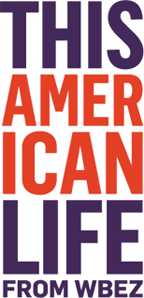Introduction
On January 6, 2012, the weekly public radio program
This American Life
(TAL) aired what turned out to be its most popular show ever, “Mr. Daisey and the Apple Factory,” an adaptation of Mike Daisey’s monologue,
The Agony and the Ecstasy of Steve Jobs
. Daisey’s expose of working conditions at a Chinese factory that produced the iPad had been playing to sold-out New York audiences for months. TALhost and reporter
Ira Glass
saw a performance, and engaged Daisey to tape an abridged version for the radio show.

On the radio program, Daisey described working conditions at the Foxconn factory in Shenzhen, which supplied Apple. He gave lurid details of deformed, underage and poorly paid workers. Listeners were riveted: they downloaded the TAL podcast over one million times, nearly double the usual rate of 600,000. Listeners tweeted and retweeted the show’s URL, and bloggers had a field day. Daisey made appearances on The Ed Show (CSNBC), CBS News, the PBS News Hour and others.
Whether in response to the TAL report or other developments, Apple a week later released an annual Supplier Responsibility Progress report nearly a month earlier than the previous year. In it, the company announced that it had hired a nonprofit organization to conduct periodic unannounced visits to its factories to observe and report any violations. TAL could not know whether the Daisey segment had inspired the announcement, but Apple was addressing issues Daisey had raised. Meanwhile, New York Times reporters were preparing a three-part investigative series about dangerous conditions at Apple’s suppliers and factories in China. The first article appeared on January 25.
But in early March, what had been an unusually successful TAL show turned sour. Rob Schmitz , the China correspondent for another public radio program, Marketplace , had listened to the podcast a week after it aired and found pieces of it did not ring true. Schmitz did some research. In a lengthy email to his editor in late February, Schmitz detailed discrepancies and inventions he had uncovered in Daisey’s monologue. The Marketplace executive producer in turn contacted TAL.
Glass and his production team were dismayed: This American Life had made a mistake on the air. For years, Glass and his staff, veteran reporters and producers, had held themselves to high standards of balance and accuracy in creating their show. Now it appeared they had been duped, and in turn had misled the devoted audience the show had built over nearly two decades.But in early March, what had been an unusually successful TAL show turned sour. Rob Schmitz, the China correspondent for another public radio program, Marketplace , had listened to the podcast a week after it aired and found pieces of it did not ring true. Schmitz did some research. In a lengthy email to his editor in late February, Schmitz detailed discrepancies and inventions he had uncovered in Daisey’s monologue. The Marketplace executive producer in turn contacted TAL.
Faced with Daisey’s falsehoods, Glass and his team considered the options. How would they tell the audience? They worried that people would stop trusting what was said on the program in general, and about a backlash against the show. While Daisey was primarily responsible, the incident raised grave questions about the rigor of the show’s fact checking. The podcast was still available online. What should they do with it? They realized they would have to say something on air—but what should they say, and how much time should it take? Should it be a story in a show on another theme? Or a show on its own? They also wanted to give Daisey a chance to respond—but in what context? The TAL team had to think it through.